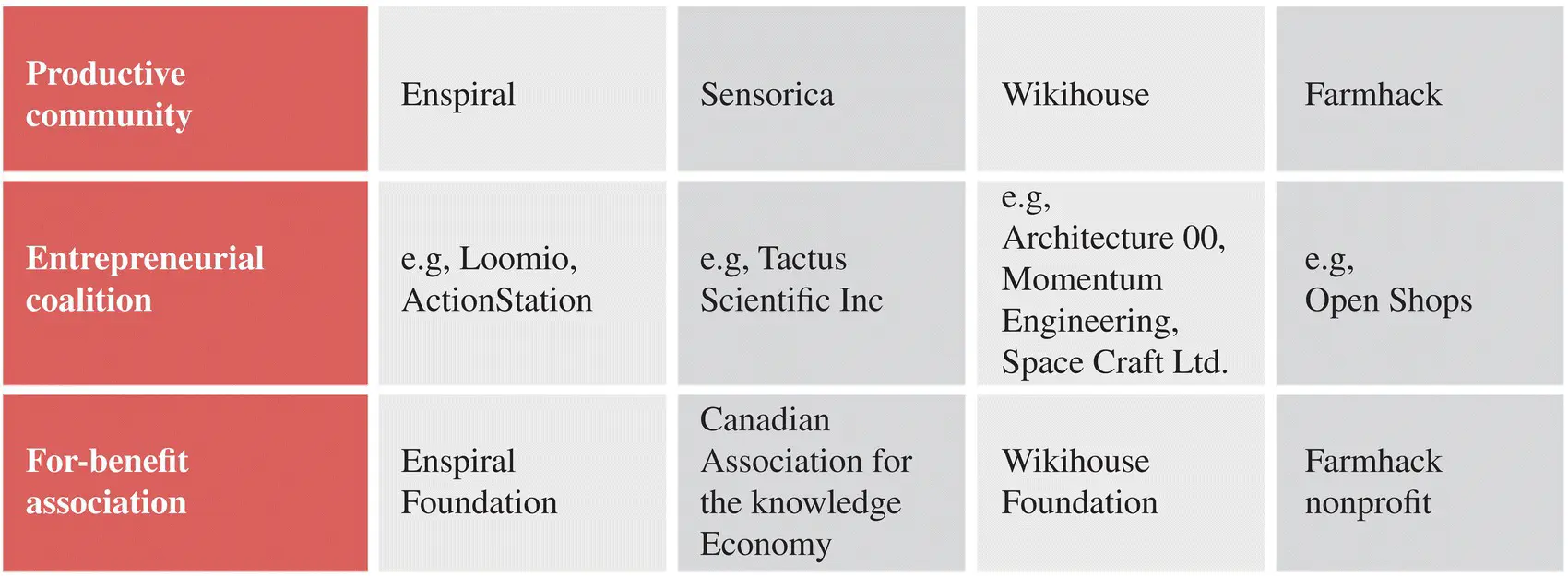
Figure 2.2 Four emerging commons‐based peer production ecosystems.
Source: Kostakis, V. & Bauwens, M. (2019). How to Create a Thriving Global Commons Economy. The Next System Project, p. 6.
The current emerging infrastructure ( Figure 2.3) consists of the following:
The productive community comprises all the contributors to a project of peer production. The members of this entity may be paid or may volunteer their contributions because of some interest in the use‐value of this production. However, all of them produce the shared resource, a commons. The most important characteristic, as compared to systems based on wage labor, is that the system must remain open to contributions (equipotentiality).
The second entity is the commons‐oriented entrepreneurial coalition, which attempts to create either profits or livelihoods by generating added value for the market, based on the shared resources. The participating enterprises can pay contributors. The digital commons themselves are most often outside the market, because they are not scarce, and therefore not subject to the laws of supply and demand.
What is crucially important in the relation among the entrepreneurs, the community and the common‐pool resource on which they depend, is whether their relationship is generative or extractive. There is a rich literature on the relationship between for‐profit enterprises and peer production communities (see, e.g., Dahlander & Magnusson, 2008; Bonacorsi et al., 2006; O'Mahony & Bechky, 2008). Of course, extraction/generation are polarities, and every entity is expected to present a mixture.

Figure 2.3 The ecosystem of a single commons‐based peer production initiative.
Source: Bauwens, M., Kostakis, V., Troncoso, S., and Utratel, A. (2017). Commons Transition and Peer‐to‐Peer: A Primer. Amsterdam: Transnational Institute, p.16.
Marjorie Kelly (2012) introduces non‐capitalist/generative enterprises, which again comes back to the distinction between markets and capitalism. So, we can have cooperatives or other forms of collectively managed organizations (e.g., nonprofits, NGOs) that have social and environmental goals and use their surplus for these goals, rather than accumulation. To demonstrate the difference between extractive and generative, think of industrial agriculture and permaculture. In the former, the soil becomes iteratively poorer and less healthy, while in the latter case the soil becomes richer and healthier.
In recent years a new type of platform‐based extractive entrepreneurs have sought to maximize their profits, and generally do not sufficiently re‐invest in the maintenance of the productive communities. Like Facebook, they do not share any profits with the co‐creating communities on which they depend for their value creation and realization. Like Uber or AirBnB, they tax exchanges but do not directly contribute to the creation of transport or hospitality infrastructures. So, the problem is that though they develop useful services that rely on underused resources, they do this in an extractive manner. Though they facilitate these services, they also create competitive mentalities which destroy the collaborative and environmental advantages of mutualizing pooled resources. Moreover, extractive enterprises may free‐ride on a whole set of social or public infrastructures (e.g., roads as in the case of Uber) and further undermine welfare provisions through the use of fictional worker autonomy to evade taxation and social benefits.
In contrast generative entrepreneurs create additional value around these communities. Seed‐forms of commons‐oriented entrepreneurial coalitions create added value on top of the commons that they co‐produce and upon which they are codependent. In the best cases, the community of entrepreneurs coincides with the productive community. The contributors build their vehicles to create livelihoods while producing the commons. They re‐invest the surplus in their well‐being and the overall commons system they co‐produce.
The third entity is the for‐benefit association that can also be seen as the infrastructural organization of the commons, i.e., they manage the infrastructures of commons‐based cooperation. Indeed, many peer production ecosystems not only consist of productive communities and entrepreneurial coalitions, but also have independent governance institutions that support the infrastructure for (stigmergic) cooperation. They enable cooperation to take place autonomously and do not command and control the peer production process itself. Behind any commons project, you always find some infrastructural organization, as you cannot have commoning without infrastructure. For example, the Wikimedia Foundation, as the for‐benefit association of Wikipedia, does not coerce the production of Wikipedia producers. That is also the case for the free and open source software foundations that often manage the infrastructure and networks of the projects.
By way of contrast, traditional non‐governmental and nonprofits organizations operate in a world of “perceived” scarcity. They identify problems, search for resources, and allocate those resources in a directive manner to the solving of the issues they have identified. This approach arguably offers a mirror image to the for‐profit model of operating.
For‐benefit associations operate for “potential” abundance. They recognize problems and issues but believe that there are enough contributors that desire to assist in solving these issues, most often via holoptism‐based stigmergic cooperation. Hence, they maintain an infrastructure of cooperation that allows contributive communities and entrepreneurial coalitions to engage in peer production processes vital for addressing these issues, without directly commanding them. Not only do they protect these commons through licenses, but may also help manage conflicts between participants and stakeholders, fundraise, and assist in the general capacity building necessary for the commons in particular fields of activity (e.g., through education or certification).
Next we discuss the novel aspects of such new interconnected commons‐based ecosystems.
5 The Transcendent Aspects of Peer Production
Despite significant differences, peer production and capitalism are highly interconnected. Peer production is dependent on the capitalist market and the capitalist market is dependent on peer production. Most peer producers cannot make a living from peer production, though they derive meaning and value from it, and though it may out‐compete the market‐based for‐profit alternatives in efficiency and productivity terms. Thus, peer production covers only a section of production, while the market provides for many more sections; peer producers are mainly dependent on the income provided by the capitalist market. Peer production has been created within the interstices of the capitalist market.
But a new form of capitalism has been emerging depending on peer production: netarchical capitalism. By “netarchical” we mean the hierarchies within the network that own and control participatory platforms. This version of capitalism is characterized by digital platforms that combine P2P elements, which allow people to interact with each other directly, but they are controlled and monitored by the platform owners. The full centralized control of the rest of the infrastructure is used to extract value from these exchanges.
Читать дальше




![О Генри - Справочник Гименея [The Handbook of Hymen]](/books/407356/o-genri-spravochnik-gimeneya-the-handbook-of-hymen-thumb.webp)









